|
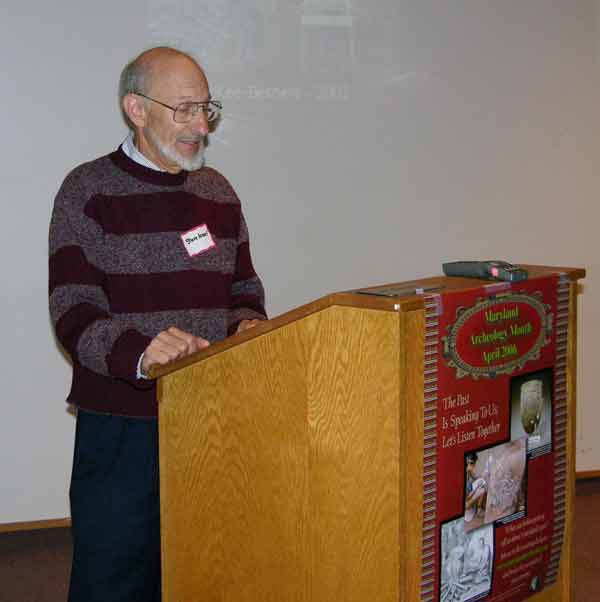 |
Welcoming Remarks: Stephen Israel, Central
Chapter |
|
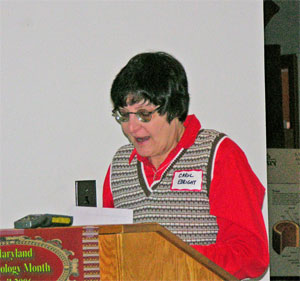 |
ASM Business Meeting |
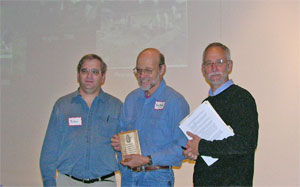 |
Roy Brown receives a plaque in recognition of his support to the
Field Session Committee. |
| |
|
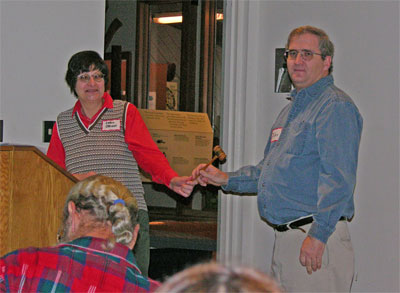 |
Carol Ebright hands the gavel to new ASM President, John Fiveash. |
|
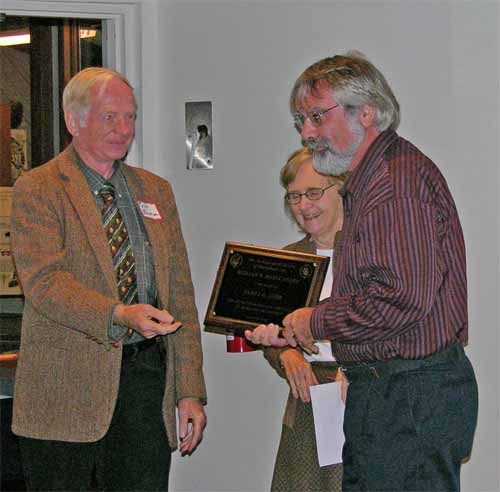 |
William B. Marye Award
Tyler Bastian and Nancy Geasey present the William B. Marye award to Jim Gibb.
|
|
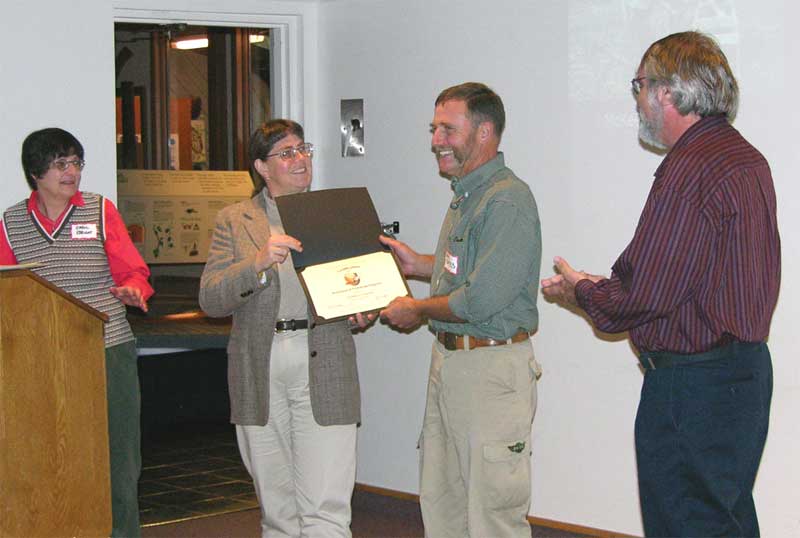 |
CAT Graduation
Dan Coates, Northern Chesapeake Chapter, became the most recent graduate of the
Certified Archeological Technician Program. His certificate was presented by Beth Ragan, CAT
Chairman.
|
|
 |
Frederick M. Stiner Memorial Lecture:
“The First Chapels of St. Mary’s City”- Silas Hurry. This paper reviews
the archaeological and historical data of the Roman Catholic chapels built in St. Mary’s
City in the 17th century. Rather than focus on the brick chapel now undergoing
reconstruction in St. Mary’s City, the presentation explores the chapel or chapels that
proceeded it and the domestic occupation associated with the earlier structures.
|
|
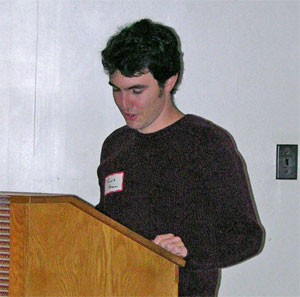 |
“Old Baltimore Site Excavations” - Travis Shaw. |
|
 |
“A History of Longwood: From the 18th-Century into the 21st-Century”
- Lee Preston. This paper is on the Longwood Archaeology and Historical Research. It
includes pictures of the archaeology (UPAG members, HCC students) and the information gained
from Census data at the Hall of Records. |
|
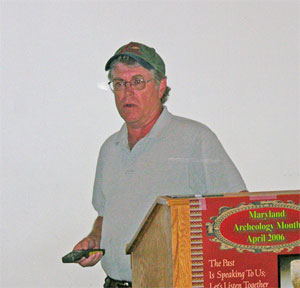 |
“A Confluence of Three Cultures”: The creation of an archaeological exhibit
at Mount Calvert - Don Creveling. Examine the process of creating a public exhibit
located in a late 1700s brick plantation house. The exhibit describes 8,000 years of American
Indian presence, the development of colonial Charles Town, Prince George’s County’s first seat
of government from 1696 – 1721, and the 1700 and 1800’s tobacco plantation. The park also
features a public archaeology program that includes tours and a volunteer program. |
|
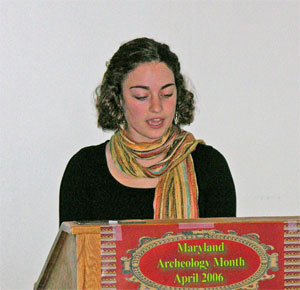 |
“ Preliminary Report on the Smith’s St. Leonard Site” - Jessica L.
Grow. The Smith’s St. Leonard Site is located at the Jefferson Patterson Park and Museum.
The site was originally the home of Richard Smith, Jr. who built his house on a bluff
overlooking the Patuxent River and St. Leonard’s creek in 1711. By 1754, the house and all of
its outbuildings had become abandoned and started to crumble. Eventually, the site was turned
into cultivated farm land. Since 2002, Jefferson Patterson Park and Museum has hosts a public
archaeology program and used the Smith’s St. Leonard Site as a program site. Volunteers have
helped to excavate the site and process the artifacts. Excavations have been done in the main
house, kitchen, and slave quarters areas, as well as a trash pit and a building of unknown use.
This preliminary report is a culmination of the known history of the site and what work has
been done there so far. |
|
 |
“The Camp at Muddy Branch at Blockhouse Point” - Vivian Eiche.
We will present a brief history of the Camp at Muddy Branch and its importance during the Civil
War. Included will be some of the archival research, pictures of artifacts, and the excavation
done at the Soldier's camp at Blockhouse Point to date. |
|
 |
“Clarke Farm: The Search for ‘Indian Town’ and what we found out”-
Stephen Israel. This paper reviews the historical records for an ‘Indian Town’ site and the
Chapter’s field survey to verify the site. The presentation will conclude with an examination
of the Clarke Farm’s recent history, landscape conditions and scattered lithic surface finds
and their value as an archeological research resource. |
|
| |
Tour of the Oregon Ridge Iron Furnace town, its history and the Tenant House
Museum use as an educational tool.- Dr. George Brauer. George Brauer will share
some of the background on the history of Oregon Ridge Iron Furnace and town and the use of the
Tenant House Museum as an educational tool. |
|